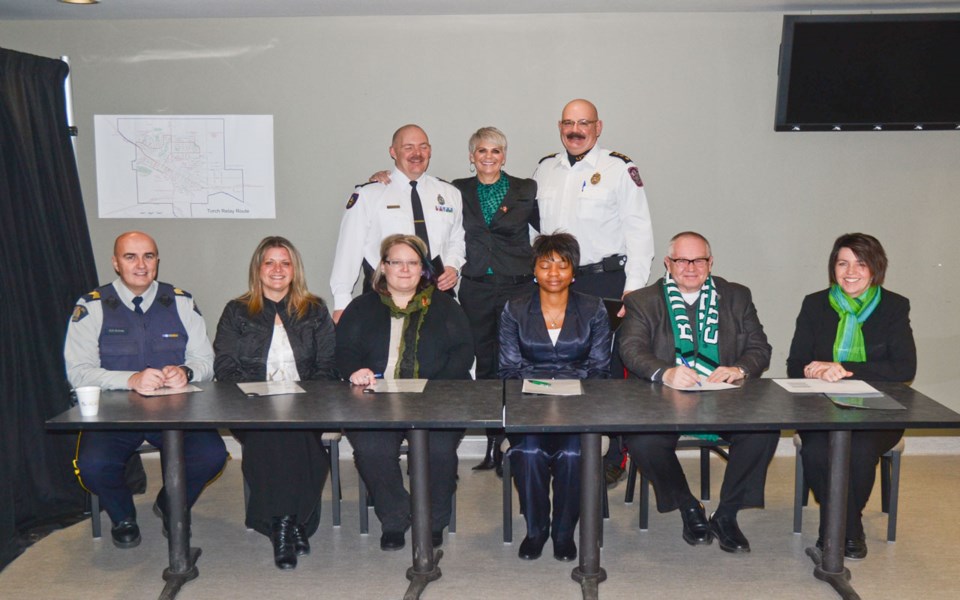A year after participating members from the various agencies around southeast Saskatchewan started a model that brings together members of a wide range of public services continues to push forward based on its successes.
The South East Region Community Mobilization Hub is made up of staff from the Estevan and Weyburn Police Services, RCMP, Sun Country Health Region, Social Services and Corrections and Policing, and the Cornerstone and Holy Family School divisions.
Those groups work together to develop an assistance plan for individuals or families in at-risk scenarios, and the hub has been a proven tool for reducing crime in other jurisdictions. The model is based on one that first came to Saskatchewan in Prince Albert but got its start in Scotland.
Janice Giroux, Sun Country’s vice president of community health and a member of the hub’s steering committee, said the hub, which puts partners in weekly communication, has gone well over its first year and a half.
The mandate is to bring people together that one sector may think is at an elevated risk that another sector may not be aware of. There are a number ways those issues may come to the attention of one of the agencies.
“It could be proactive because you could make a difference in a community and improve a community, if you look at some of those long-term outcomes and the solutions that may prevent it from re-occurring,” said Giroux.
Estevan Police Chief Paul Ladouceur said the hub provides a more holistic approach to problem solving for at-risk individuals.
“The hub’s a phenomenal approach. It’s certainly a modern approach to dealing with issues, especially social issues, and addressing root causes,” said Ladouceur.
“If there’s one message that needs to go out it’s gone are the days of agencies working in a silo. We realize that it benefits all agencies, and, most importantly, the individual.”
“Maybe there’s an opportunity to look at some of those systemic issues and the root causes that affect not only health but other sectors. From the health region’s perspective, those are some of the things a typical hub situation might bring us. How might we work better with social services and continue to work on improving that,” said Giroux.
“If the root cause is mental health, how are we to know that person is experiencing those difficulties unless we consult with mental health,” noted Ladouceur. “There’s a wealth of knowledge that exists in helping people, but we’re not connecting the dots, we haven’t in the past done a great job at connecting the dots, and I think that’s exactly what hub does. It connects the dots.”
The logistics for meetings were perhaps the most problematic but teleconferencing became an ideal solution to the regular travel between the two Highway 39 cities.
Sun Country, she noted, has two hubs that are active through both Estevan and Weyburn.
As part of the steering committee, she noted they will be looking at some of numbers and statistics to see where the program goes from here. Though it only exists in Estevan and Weyburn at the moment, there is some possibility to stretch the program into some of the other towns and villages around the southeast corner of the province.
How and when it is expanded will be determined at a later time and it will also be dependent on any further logistical problems getting more partners involved.
“Everybody has their wish list, and we really need to go through what that’s going to look like,” said Giroux, who noted any expansion would likely add a health region and even more school divisions into the mix.
While the plans aren’t in the works at the moment, she said those are discussions they will have to have in the future.
“As we learn more about working better together, you realize if we could have been talking before this, we might have been able to nip this in the bud. The hub is looking at situations that are acute elevated risk. It’s really about making sure we follow the principles that have been set out for us,” said Giroux.



